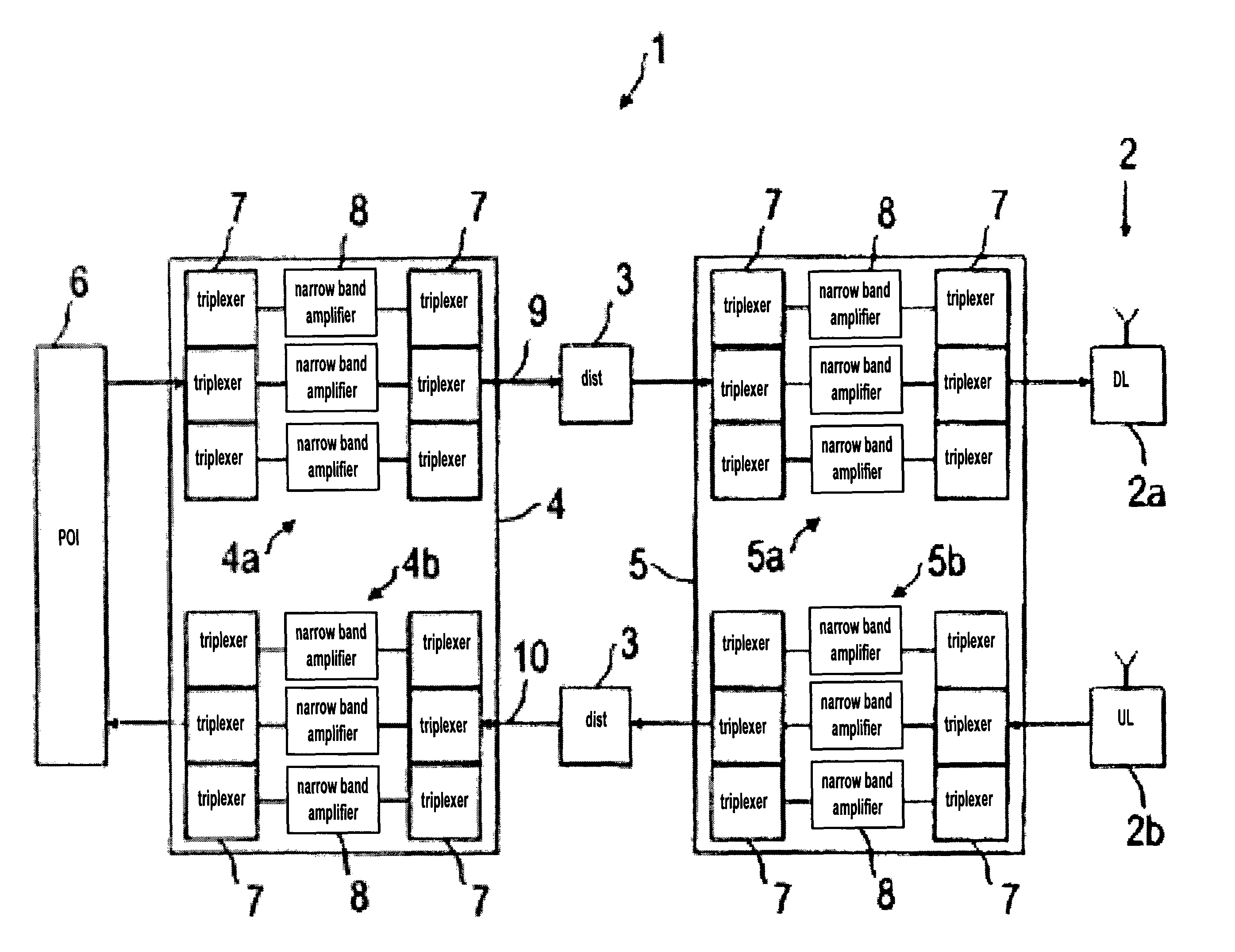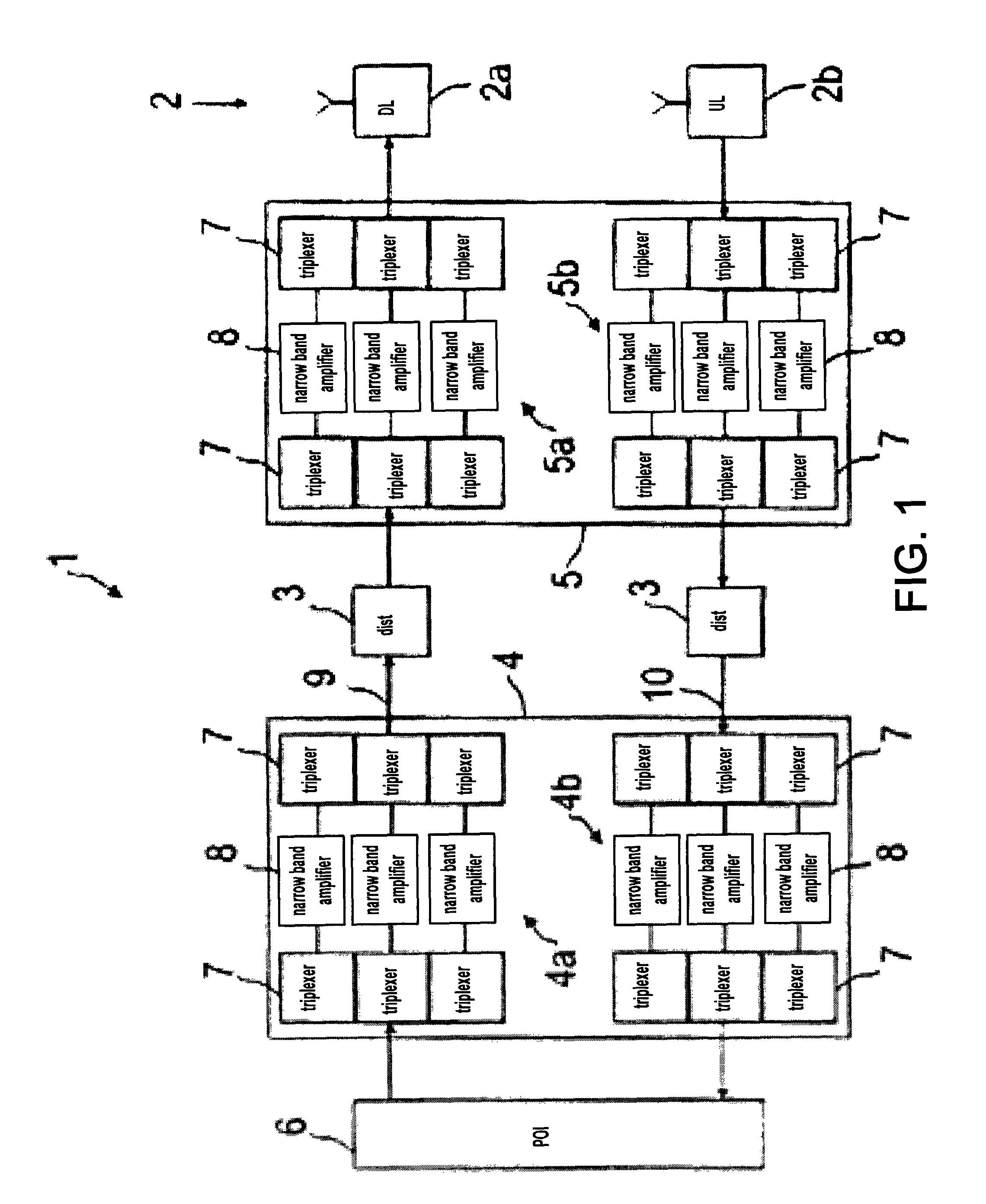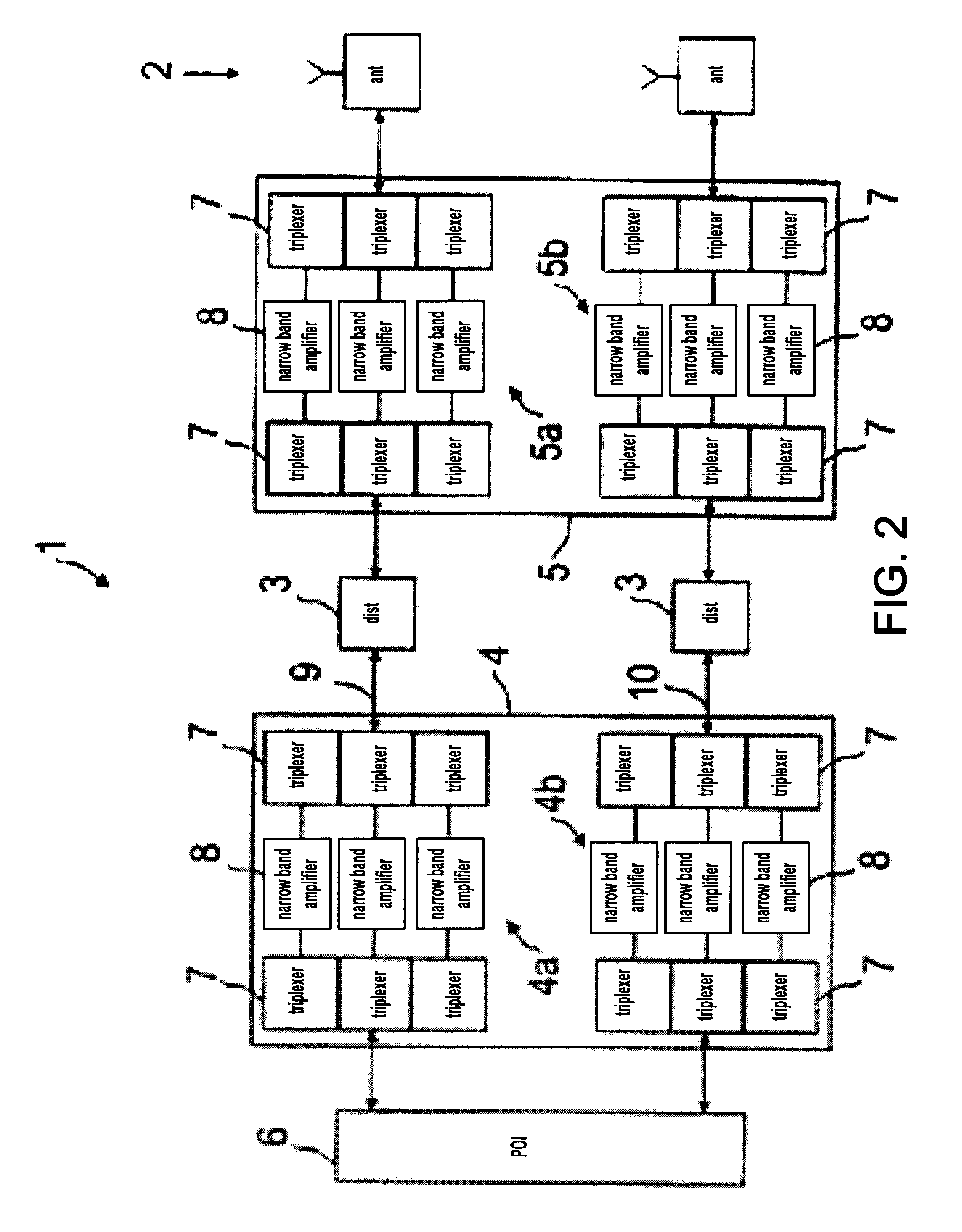Radio frequency network
a radio frequency network and frequency technology, applied in frequency-division multiplexes, electrical equipment, wireless commuication services, etc., can solve the problems of low-priced technology used in amplifiers and loss dependence, and achieve sufficient coverage, optimize the dynamic range of the network, and save the cost of monitoring equipment and maintenance personnel for commissioning and testing.
- Summary
- Abstract
- Description
- Claims
- Application Information
AI Technical Summary
Benefits of technology
Problems solved by technology
Method used
Image
Examples
Embodiment Construction
[0024]FIG. 1 shows a block diagram of a first embodiment of a radio frequency network 1 according to the present invention. The radio frequency network 1 comprises a distributed antenna system 2 having radiating elements (not shown) and a wired distribution system 3 feeding the distributed antenna system 2. Furthermore, the shown radio frequency network 1 comprises a line amplifier 4 at one end of the wired distribution system 3 and an antenna amplifier 5 at the other end thereof. Signals from a centralized source (not shown), e.g. Base Transceiver Station (BTS) or Node B or off-air repeater, are combined via a point of interconnection 6 (POI) and fed to the wired distribution system 3 via the line amplifier 4. The radio frequency network 1 shown in FIG. 1 is bidirectional. That is, signals received by the distributed antenna system 2 are transmitted via the antenna amplifier 5, the wired distribution system 3, and the line amplifier 4 to the point of interconnection 6.
[0025]The rad...
PUM
 Login to View More
Login to View More Abstract
Description
Claims
Application Information
 Login to View More
Login to View More - R&D
- Intellectual Property
- Life Sciences
- Materials
- Tech Scout
- Unparalleled Data Quality
- Higher Quality Content
- 60% Fewer Hallucinations
Browse by: Latest US Patents, China's latest patents, Technical Efficacy Thesaurus, Application Domain, Technology Topic, Popular Technical Reports.
© 2025 PatSnap. All rights reserved.Legal|Privacy policy|Modern Slavery Act Transparency Statement|Sitemap|About US| Contact US: help@patsnap.com



